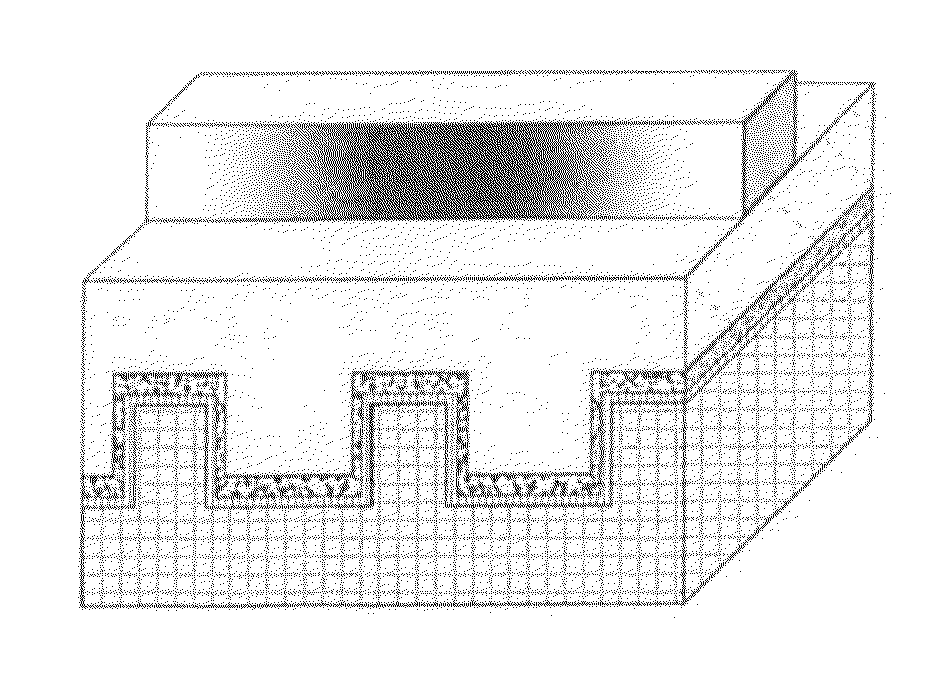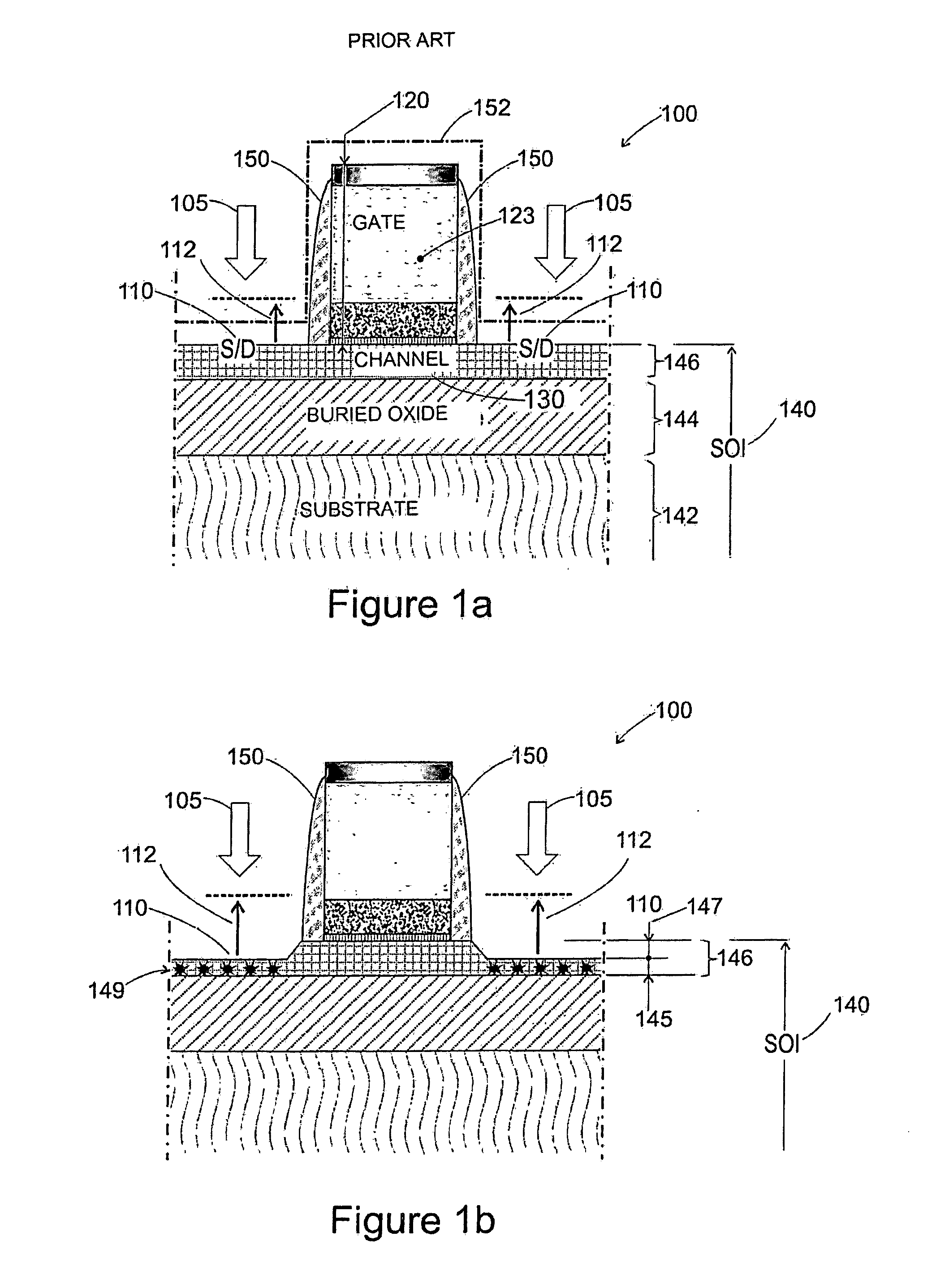Method for forming spacers for a transistor gate
a transistor gate and spacer technology, applied in the field of field effect transistors, can solve the problems of limited selectivity of attack of the underlying silicon, difficult to obtain spacers, surface consumption of silicon,
- Summary
- Abstract
- Description
- Claims
- Application Information
AI Technical Summary
Benefits of technology
Problems solved by technology
Method used
Image
Examples
Embodiment Construction
[0096]In the context of the present invention, the term “on”, “surmounts”, “cover” or “underlying” or the equivalent thereof do not necessarily mean “in contact with”. Thus for example the deposition of a first layer on a second layer does not necessarily mean that the two layers are directly in contact with each other but means that the first layer at least partially covers the second layer while being either directly in contact therewith or being separated from it by another layer or another element.
[0097]In the following description, the thicknesses are generally measured in directions perpendicular to the plane of the bottom face of the layer to be etched or of a substrate on which the bottom layer is disposed. Thus the thicknesses are generally taken in a vertical direction on the figures depicted. On the other hand the thickness of a layer covering a flank of a pattern is taken in a direction perpendicular to this flank.
[0098]The dielectric constants are for example measured b...
PUM
 Login to View More
Login to View More Abstract
Description
Claims
Application Information
 Login to View More
Login to View More - R&D
- Intellectual Property
- Life Sciences
- Materials
- Tech Scout
- Unparalleled Data Quality
- Higher Quality Content
- 60% Fewer Hallucinations
Browse by: Latest US Patents, China's latest patents, Technical Efficacy Thesaurus, Application Domain, Technology Topic, Popular Technical Reports.
© 2025 PatSnap. All rights reserved.Legal|Privacy policy|Modern Slavery Act Transparency Statement|Sitemap|About US| Contact US: help@patsnap.com



